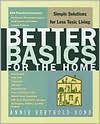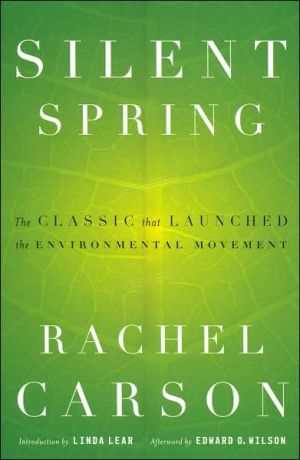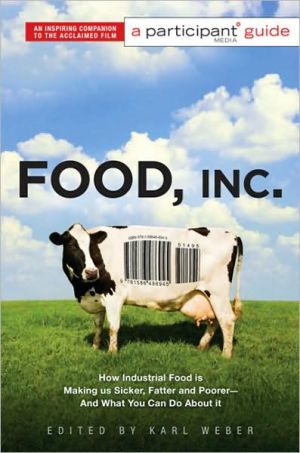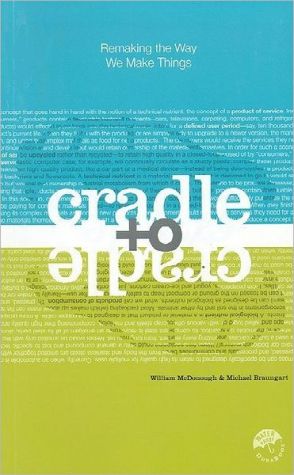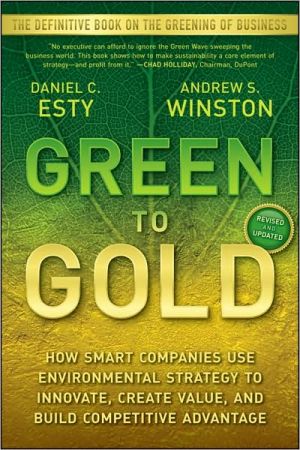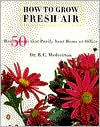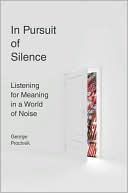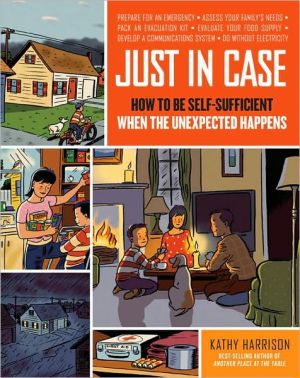Better Basics for the Home: Simple Solutions for Less-Toxic Living
Search in google:
The Commonsense Rule of Thumb\ It is a great relief to establish a healthy home. Two-thirds of us cite healthy air and water as an extremely important local priority, second only to safety from crime, according to Roper Starch Worldwide. National Wildlife Federation research has noted that up to 80 percent of us are concerned about how pesticides and indoor air pollution affect our health. Other polls show that a natural lifestyle is one that women, mothers in particular, overwhelmingly want because it protects the health of their families.\ Yet polls ever since Earth Day 1990 consistently show a significant gap between wanting a more healthful environment and knowing how to create it. We are realizing that the government doesn't fully protect us from toxic products, leaving an uneasy and pervasive feeling that we have to take charge of safeguarding our families' health. The stumbling blocks seem insurmountable.\ Having lived in a healthy home for more than a decade, I've learned that after some initial adjustment, the way to establish such a home is quite simple. The most important guideline for choosing safe materials is to follow this basic rule of thumb: Use only materials that have been around so long, and been used by people without harm for so long, that they are "generally regarded as safe" (GRAS for short), otherwise they would have long since been abandoned. Using only GRAS substances will take us back to the time before plastics and forward to new technology using old and safe materials. It will introduce us to plants and healing herbs; minerals such as baking soda, borax, and washing soda; and products from animals and insects such as milk, honey, shellac, and royal jelly. We may not have realized that these natural materials could clean, disinfect, moisturize, or make paint. This discovery will open up a new way of looking at our world.\ Our alternative is to get a combined degree in toxicology and environmental studies in order to do a simple risk analysis of bathtub cleansers that won't cause harm, or to go shopping armed with research files. That's a stretch for even the most well intentioned among us.\ Help also comes from something we all already have, even if we need to clear out cobwebs to find it, and that is our common sense. If the choice for polishing furniture is between polish in a can that reads "fatal if swallowed" or using a simple but effective recipe of lemon juice and raw linseed oil, common sense and the GRAS rule guide us to the lemon and raw linseed oil.\ Mixing up face creams or wood stain isn't much different than cleaning the windows with vinegar, soap, and water instead of using Brand Name X, or making a cake with flour, eggs, and milk instead of buying a mix. And it seems amazing, although true, that we can make paint ourselves using milk and lime. With a few simple staples we can clean our houses, wash our hair, rid the dog's bed of fleas, and do many other things too.\ Looking for cause and effect is another way of choosing safe products. Sometimes I wonder if we've allowed consumer products to deplete the earth's resources or to be so toxic because the products don't look like the raw materials used to make them. We don't see the connections. A can of pretty robin's-egg blue paint in a hardware store isn't visibly connected to its ingredients of fungicides and petroleum or to the smokestacks of the factory where it was made. Seeing the loss and damage that occurs in its creation might incline us to purchase a more ecological brand or to buy a little less. Or having access to the old-timers' recipe for milk paint might inspire us to try it out ourselves.\ Just because a formula is old, or its ingredients are natural, doesn't mean it is safe, of course. Some old paint recipes call for white lead. A musty-smelling 1951 housekeeping book I found recently at a yard sale recommended using DDT paint on screens and windows. DDT paint! For those of you not familiar with DDT, it is a pesticide, now banned, that is symbolic of the worst of the industrial age's impact on the environment. Natural materials such as turpentine, citrus solvents, and tung oil can cause health problems for many. Needless to say, we need to look at the old recipes with a discerning eye. The key is to integrate the best of the old-the simplest, most wholesome ingredients and methods-with the best of the new-information about the effect of poisons on our collective health, and how to replace them with safe alternatives.\ Signal Words Besides choosing GRAS materials, the next best way to protect yourself and the world at large from toxic products is to read labels and pay particular attention to "signal words." They are placed on products by order of the federal government, with the primary purpose of protecting you, but sometimes to tell you about the products' potential impact on the environment. POISON/DANGER means some-thing very toxic; only a few drops could kill you. WARNING means moderately toxic; as little as a teaspoonful can kill. CAUTION denotes a product that is less toxic; two tablespoons to a cup could kill you. There are a few others, such as strong sensitizer, which means the product can cause multiple allergies. I'd suggest that everyone get over the "it will never happen to me" way of thinking and read labels, believe them, and simply avoid toxic products. Calamity might not happen to you, but it could happen to a child, or a neighbor, or a fish or a dog.\ Putting Better Basics into Practice\ Most people have some practical concerns about living without toxic chemicals. Just how much of a change is it going to be? Does living this way take more time? Is it more expensive? How do I begin? My answers to these legitimate questions follow. But basically, I suggest you just jump in and try it. I've never once had a person tell me they've regretted it. Some people want to switch to less toxic living on the spot; others stop restocking toxic cleansers as they run out, learning about the alternatives as they go along. Most start switching to natural body care gradually. Choose any way that will work for you. To make it easier to start the process of changing over, I have placed an icon (#) at particularly easy recipes, hoping this will offer you the encouragement you need to give Better Basics for the Home a try.
